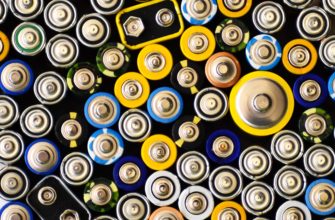Electric cars are becoming more popular and accessible as the world shifts towards cleaner and greener energy sources. Tesla, one of the leading electric car manufacturers, has been at the forefront of innovation and excellence in this field. But what makes Tesla’s electric cars so special and efficient? The answer lies in the heart of their vehicles: the battery.
Understanding the components of electric car batteries is crucial for anyone who wants to learn more about how these vehicles work, what makes them different from traditional cars and what challenges and opportunities they face in the future. In this article, we will explore the components of Tesla’s electric car batteries, as well as the materials, technologies and trends that shape the electric car battery landscape. We will also compare and contrast different types of electric car batteries and examine how they impact the performance, longevity and sustainability of electric vehicles.
By the end of this article, you will have a comprehensive and in-depth knowledge of Tesla battery components and electric car battery essentials. You will also gain a better appreciation of the role of battery technology in shaping the future of electric vehicles. So, let’s get started!

Tesla Battery Component Exploration
Tesla’s electric car batteries are not like the conventional lead-acid batteries that power most gasoline cars. They are based on lithium-ion technology, which offers higher energy density, lower weight and longer lifespan than other battery types. Tesla’s batteries are also designed to be modular, scalable and adaptable, allowing them to fit different vehicle models and configurations.
But what are the key components that make up Tesla’s electric car batteries? Let’s break them down into five main categories: cathode materials, anode materials, electrolytes, separator materials and battery casing and thermal management systems. Each of these components plays a vital role in the functioning and performance of the battery, and Tesla has been constantly innovating and improving them to achieve higher efficiency, lower cost and greater sustainability.
Cathode materials
The cathode is the positive electrode of the battery, where lithium ions move from the electrolyte to the external circuit during discharge. The cathode material determines the capacity, voltage and energy density of the battery, as well as its cost and environmental impact. Tesla uses different cathode materials for its various battery models, depending on the performance and price trade-offs.
For example, Tesla’s Model 3 and Model Y use nickel-cobalt-aluminum (NCA) cathodes, which offer high energy density, long cycle life and low cost. However, NCA cathodes also have some drawbacks, such as high cobalt content, which is expensive and has ethical and environmental concerns. Tesla’s Model S and Model X use nickel-cobalt-manganese (NCM) cathodes, which have lower cobalt content and higher thermal stability, but also lower energy density and higher cost. Tesla is also developing new cathode materials, such as lithium iron phosphate (LFP), which have no cobalt and are cheaper and safer, but also have lower energy density and voltage.
Anode materials
The anode is the negative electrode of the battery, where lithium ions move from the external circuit to the electrolyte during charge. The anode material determines the power, rate capability and safety of the battery, as well as its cost and lifespan. Tesla uses graphite as the main anode material for its lithium-ion batteries, which offers high conductivity, low weight and good stability. However, graphite also has some limitations, such as low capacity, volume expansion and lithium plating.
Tesla is also exploring new anode materials, such as silicon, which have higher capacity, lower cost and better performance than graphite. However, silicon also has some challenges, such as volume expansion, cracking and instability. Tesla is developing novel ways to overcome these challenges, such as using silicon nanowires, coating silicon with carbon or mixing silicon with graphite. Tesla is also researching other anode materials, such as lithium metal, which have the highest theoretical capacity, but also pose safety and durability issues.
Electrolytes
The electrolyte is the medium that allows the flow of lithium ions between the cathode and the anode. The electrolyte also affects the safety, stability and performance of the battery, as well as its cost and lifespan. Tesla uses liquid electrolytes for its lithium-ion batteries, which offer high ionic conductivity, low resistance and easy manufacturing. However, liquid electrolytes also have some drawbacks, such as flammability, leakage and degradation.
Tesla is also investigating new electrolyte materials, such as solid electrolytes, which have higher safety, stability and energy density than liquid electrolytes. However, solid electrolytes also have some challenges, such as low ionic conductivity, high interfacial resistance and compatibility issues. Tesla is developing innovative solutions to overcome these challenges, such as using ceramic, polymer or composite materials, or enhancing the interface between the electrodes and the electrolyte.

Tesla is also experimenting with new separator materials, such as ceramic-coated separators, which have higher thermal stability, better puncture resistance and lower shrinkage than polymer separators. However, ceramic-coated separators also have some drawbacks, such as higher cost, lower flexibility and higher resistance. Tesla is optimizing the coating thickness, composition and morphology to achieve the best balance between performance and cost.
Separator materials
The separator is the material that prevents physical contact between the cathode and the anode, while allowing the passage of lithium ions. The separator material affects the safety, reliability and performance of the battery, as well as its cost and weight. Tesla uses polyethylene or polypropylene as the main separator materials for its lithium-ion batteries, which offer high porosity, low resistance and good mechanical strength. However, these materials also have some disadvantages, such as melting at high temperatures, shrinking at low temperatures and puncturing by metal particles.
Battery casing and thermal management systems
The battery casing and thermal management systems are the components that protect and regulate the temperature of the battery pack. The battery casing and thermal management systems affect the safety, durability and performance of the battery, as well as its cost and weight. Tesla uses aluminum as the main material for its battery casing, which offers high strength, light weight and good corrosion resistance. However, aluminum also has some drawbacks, such as high cost, low thermal conductivity and potential galvanic corrosion.
Tesla is also improving its thermal management systems, which use liquid cooling or heating to maintain the optimal temperature range for the battery. Tesla’s thermal management systems are designed to prevent overheating, overcharging or freezing of the battery, which can damage the battery or reduce its lifespan. Tesla is also developing new thermal management systems, such as heat pipes, phase change materials or thermoelectric devices, which can enhance the efficiency, reliability and performance of the battery.
Car Battery Material Deep Dive
Now that we have learned about the components of Tesla’s electric car batteries, let’s take a closer look at the materials that are used to make them. How do these materials differ from the ones used in traditional car batteries? How have they evolved over time to meet the demands of electric car technology? And what are the benefits and drawbacks of each material choice?
In this section, we will compare and contrast the common materials used in traditional car batteries and the evolution of materials in electric car batteries. We will also explore how lightweight materials and sustainable materials are enhancing the efficiency and eco-friendliness of electric car batteries.
Common materials used in traditional car batteries
Traditional car batteries, also known as lead-acid batteries, are the oldest and most widely used type of rechargeable batteries. They consist of two electrodes, a positive electrode made of lead dioxide and a negative electrode made of lead, immersed in an electrolyte solution of sulfuric acid and water. The chemical reaction between the electrodes and the electrolyte produces electricity and converts the lead and lead dioxide into lead sulfate.
Lead-acid batteries have some advantages, such as low cost, high reliability and high power output. However, they also have many disadvantages, such as low energy density, heavy weight, short lifespan and environmental pollution. Lead-acid batteries are not suitable for electric cars, as they cannot store enough energy, deliver enough power or withstand frequent charging and discharging cycles. Moreover, lead-acid batteries pose serious health and environmental risks, as lead is a toxic metal that can cause neurological damage, and sulfuric acid is a corrosive substance that can cause burns and acid rain.
Evolution of materials in electric car batteries
Electric car batteries, also known as lithium-ion batteries, are the most advanced and widely used type of rechargeable batteries for electric vehicles. They consist of two electrodes, a positive electrode made of a lithium-based compound and a negative electrode made of carbon or silicon, immersed in an electrolyte solution of lithium salts and organic solvents. The chemical reaction between the electrodes and the electrolyte allows the movement of lithium ions and electrons, which produces electricity and changes the composition of the electrodes.
Lithium-ion batteries have many advantages, such as high energy density, light weight, long lifespan, and low environmental impact. However, they also have some challenges, such as high cost, safety issues, and limited availability of raw materials. Lithium-ion batteries have evolved over time to meet the demands of electric car technology, by using different materials for the electrodes and the electrolyte. For example, Tesla’s lithium-ion batteries use nickel-cobalt-aluminum (NCA) or nickel-cobalt-manganese (NCM) for the positive electrode, graphite or silicon for the negative electrode, and liquid or solid electrolytes. These materials offer different trade-offs between performance, cost, and sustainability.
Lightweight materials for enhanced efficiency
One of the main goals of electric car battery technology is to increase the efficiency of the vehicles, by reducing the weight and increasing the range of the batteries. Lightweight materials are essential for achieving this goal, as they can reduce the mass and volume of the battery pack and improve the power-to-weight ratio and the energy-to-weight ratio of the battery. Lightweight materials can also reduce the energy consumption and the greenhouse gas emissions of the vehicles, by lowering the drag and the rolling resistance of the wheels.
Some of the lightweight materials that are used or being developed for electric car batteries are aluminum, magnesium, titanium, carbon fiber, and graphene. These materials have high strength, low density and good conductivity, which make them ideal for battery casing, electrodes, and separators. However, these materials also have some challenges, such as high cost, low availability and compatibility issues. Tesla is working on finding the optimal balance between the weight and the cost of these materials, as well as enhancing their performance and durability.
Sustainable materials promoting eco-friendly practices
Another main goal of electric car battery technology is to increase the sustainability of the vehicles, by reducing the environmental impact and enhancing the social responsibility of the battery production and disposal. Sustainable materials are crucial for achieving this goal, as they can reduce the dependence on scarce and harmful resources, such as cobalt, lithium and fossil fuels, and increase the use of renewable and recyclable resources, such as biomass, water and solar energy. Sustainable materials can also reduce the pollution and the waste generation of the battery life cycle, by minimizing the greenhouse gas emissions, the toxic substances and the landfill disposal.
Some of the sustainable materials that are used or being developed for electric car batteries are lithium iron phosphate (LFP), sodium-ion, organic, and biodegradable materials. These materials have low toxicity, high abundance and good recyclability, which make them ideal for cathode, anode and electrolyte materials. However, these materials also have some challenges, such as low energy density, low voltage, and low stability. Tesla is working on finding the optimal balance between the sustainability and the performance of these materials, as well as improving their quality and safety.

Impact of material choices on battery performance and longevity
The material choices for electric car batteries have a significant impact on the performance and longevity of the batteries, as they determine the capacity, power, voltage, energy density, cycle life and safety of the batteries. Different materials have different strengths and weaknesses, and they affect the battery performance and longevity in different ways.
For example, lithium is the most widely used metal for the positive electrode of electric car batteries, as it has the highest specific capacity and the lowest electrochemical potential of any metal. However, lithium also has some drawbacks, such as high reactivity, low availability and high cost. Lithium can also cause safety issues, such as thermal runaway, fire or explosion, if the battery is overcharged, overheated or damaged.
Another example is silicon, which is a promising material for the negative electrode of electric car batteries, as it has a much higher specific capacity than carbon, and it is abundant and cheap. However, silicon also has some challenges, such as large volume expansion and contraction during charging and discharging, which can cause cracking, pulverization and loss of contact with the current collector. Silicon can also suffer from low conductivity, low stability and low cycle life.
Therefore, the material choices for electric car batteries have to balance the trade-offs between performance and longevity, as well as between cost and sustainability. Tesla is constantly researching and developing new materials and technologies to optimize the performance and longevity of its electric car batteries, while reducing the cost and environmental impact.
Lithium-ion batteries
Lithium-ion batteries are the most common and widely used type of electric car batteries, as they offer high energy density, light weight, long lifespan and low environmental impact. Lithium-ion batteries consist of a positive electrode made of a lithium-based compound, a negative electrode made of carbon or silicon, and a liquid electrolyte made of lithium salts and organic solvents. The chemical reaction between the electrodes and the electrolyte allows the movement of lithium ions and electrons, which produces electricity and changes the composition of the electrodes.
Lithium-ion batteries have many advantages, such as high capacity, high power, high voltage and high efficiency. They can store more energy, deliver more power, operate at higher voltages and lose less energy than other battery types. They can also last longer, as they have a longer cycle life and a lower self-discharge rate than other battery types. They can also be more eco-friendly, as they have lower greenhouse gas emissions, lower toxic substances and higher recyclability than other battery types.
However, lithium-ion batteries also have some disadvantages, such as high cost, safety issues and limited availability of raw materials. They are more expensive to produce and maintain than other battery types, as they require high-quality materials, sophisticated manufacturing processes and complex management systems. They are also more prone to safety issues, such as thermal runaway, fire or explosion, if they are overcharged, overheated or damaged. They are also more dependent on scarce and harmful resources, such as lithium, cobalt and nickel, which are limited in supply and have ethical and environmental concerns.
Solid-state batteries
Solid-state batteries are a new and emerging type of electric car batteries, as they offer higher safety, stability, and energy density than lithium-ion batteries. Solid-state batteries consist of a positive electrode made of a lithium-based compound, a negative electrode made of carbon or silicon and a solid electrolyte made of ceramic, polymer or composite materials. The chemical reaction between the electrodes and the electrolyte allows the movement of lithium ions and electrons, which produces electricity and changes the composition of the electrodes.
They are less prone to safety issues, such as thermal runaway, fire, or explosion, as they do not use flammable or leaky liquid electrolytes. They are also more stable and durable, as they do not suffer from degradation or corrosion of the electrolyte or the electrodes. They can also store more energy, as they can operate at higher voltages, use higher capacity materials and have thinner and denser electrodes and electrolytes.
However, solid-state batteries also have some disadvantages, such as lower ionic conductivity, higher interfacial resistance and higher manufacturing complexity. They have lower ionic conductivity than liquid electrolytes, which means they have lower power output and lower rate capability. They also have higher interfacial resistance than liquid electrolytes, which means they have lower efficiency and lower cycle life.

Comparative analysis of EV battery types
EV battery types are the different categories of batteries that are used for electric vehicles, based on their material composition, structure, and performance. EV battery types vary depending on the type, model and manufacturer of the electric vehicle, but they generally fall into two main groups: lithium-ion batteries and solid-state batteries. These two groups have different advantages and disadvantages, and they affect the performance, longevity and sustainability of the electric vehicle in different ways.
Lithium-ion batteries are the most common and widely used type of EV batteries, as they offer high energy density, light weight, long lifespan and low environmental impact. However, they also have some drawbacks, such as high cost, safety issues and limited availability of raw materials. Lithium-ion batteries consist of a positive electrode made of a lithium-based compound, a negative electrode made of carbon or silicon and a liquid electrolyte made of lithium salts and organic solvents.
Solid-state batteries are a new and emerging type of EV batteries, as they offer higher safety, stability and energy density than lithium-ion batteries. However, they also have some challenges, such as lower ionic conductivity, higher interfacial resistance and higher manufacturing complexity. Solid-state batteries consist of a positive electrode made of a lithium-based compound, a negative electrode made of carbon or silicon and a solid electrolyte made of ceramic, polymer or composite materials.
The table below summarizes the main differences between lithium-ion and solid-state batteries, based on their material composition and their performance characteristics.
| EV Battery Type | Material Composition | Performance Characteristics |
|---|---|---|
| Lithium-ion | Positive electrode: lithium-based compound; Negative electrode: carbon or silicon; Electrolyte: liquid (lithium salts and organic solvents). | Energy density: high; Power output: high; Voltage: high; Efficiency: high; Cycle life: long; Self-discharge rate: low; Cost: high; Safety: low; Availability of raw materials: low; Environmental impact: low. |
| Solid-state | Positive electrode: lithium-based compound; Negative electrode: carbon or silicon; Electrolyte: solid (ceramic, polymer, or composite). | Energy density: higher; Power output: lower; Voltage: higher; Efficiency: lower; Cycle life: longer; Self-discharge rate: lower; Cost: higher; Safety: higher; Availability of raw materials: low; Environmental impact: lower. |
EV Battery Components: Building Blocks of Sustainable Transportation
EV battery components are the parts that make up the battery pack of an electric vehicle, which is the device that stores and delivers energy for the vehicle. EV battery components are essential for the performance, longevity and sustainability of the electric vehicle, as they determine the capacity, power, voltage, energy density, cycle life and safety of the battery. EV battery components also affect the cost and environmental impact of the electric vehicle, as they require different materials, processes and technologies to produce and maintain.
EV batteries are composed of various materials and components that work together to store and deliver energy for the electric vehicle. The composition of EV batteries affects the performance, longevity, and sustainability of the electric vehicle, as well as its cost and environmental impact. The composition of EV batteries varies depending on the type, model, and manufacturer of the electric vehicle, but it generally consists of four main elements: electrodes, electrolyte, separator, and casing.
In this section, we will take an in-depth look into the key components of EV batteries, such as electrodes, electrolyte, separator, and casing. We will also explore the technological advancements that are shaping the future of EV components, such as battery management systems, charging infrastructure, and smart grid integration.
Technological advancements shaping the future of EV components
EV components are not only influenced by the material choices, but also by the technological advancements that are constantly improving and innovating the design, manufacturing and operation of the battery pack. Technological advancements are essential for enhancing the performance, longevity, and sustainability of the electric vehicle, as well as reducing the cost and environmental impact. Some of the technological advancements that are shaping the future of EV components are battery management systems, charging infrastructure and smart grid integration.
Battery management systems are the software and hardware that monitor and control the battery pack, such as the state of charge, state of health, temperature, voltage, current and power. Battery management systems are crucial for ensuring the safety, reliability and efficiency of the battery, as well as optimizing its performance and lifespan. Battery management systems are also important for communicating with the vehicle and the driver, providing information and feedback on the battery status and performance. Battery management systems are becoming more advanced and intelligent, using artificial intelligence, machine learning, and cloud computing to enhance their functionality and accuracy.
Charging infrastructure is the network of facilities and equipment that provide electricity to the electric vehicle, such as charging stations, plugs, cables and adapters. Charging infrastructure is vital for ensuring the convenience, accessibility and affordability of the electric vehicle, as well as increasing its range and usability. Charging infrastructure is becoming more widespread and diverse, using wireless, fast and smart charging technologies to improve their service and quality.
Smart grid integration is the connection and coordination of the electric vehicle and the electric grid, which is the system of power generation, transmission and distribution. Smart grid integration is beneficial for enhancing the stability, security, and sustainability of the electric vehicle and the electric grid, as well as reducing the cost and environmental impact. Smart grid integration is also advantageous for creating new opportunities and values for the electric vehicle and the electric grid, such as vehicle-to-grid, vehicle-to-home and vehicle-to-vehicle services. Smart grid integration is becoming more feasible and efficient, using internet of things, blockchain and big data technologies to facilitate their interaction and cooperation.

Emerging trends and challenges in electric car battery technology
Electric car battery technology is constantly evolving and improving, as new materials, processes and technologies are being developed and tested to enhance the performance, longevity and sustainability of the batteries. Electric car battery technology is also facing new trends and challenges, as the demand and expectations for electric vehicles are increasing and changing. Some of the emerging trends and challenges in electric car battery technology are:
- The development of new materials, such as solid-state electrolytes, lithium metal anodes and high-nickel cathodes, which can offer higher energy density, higher safety and lower cost than the current materials. However, these new materials also pose technical and manufacturing difficulties, such as low ionic conductivity, high interfacial resistance and compatibility issues.
- The improvement of battery management systems, such as artificial intelligence, machine learning and cloud computing, which can enhance the functionality and accuracy of the software and hardware that monitor and control the battery pack. However, these improvements also require more advanced and expensive processes and equipment, as well as more data and security protection.
- The integration of smart grid and vehicle-to-grid services, such as internet of things, blockchain, and big data, which can facilitate the interaction and cooperation between the electric vehicle and the electric grid, and create new opportunities and values for both. However, these integrations also involve more complex and dynamic systems and networks, as well as more regulations and standards.
Therefore, electric car battery technology is a dynamic and challenging field, that requires continuous research and development, as well as collaboration and innovation, to achieve the optimal balance between performance, longevity and sustainability.

Research and development in enhancing electric car battery components
Research and development (R&D) is the process of creating and improving new products, technologies and processes, through scientific investigation, experimentation and innovation. R&D is essential for enhancing the performance, longevity and sustainability of electric car battery components, as well as reducing the cost and environmental impact. R&D is also driven by the demand and expectations of the electric vehicle market, as well as the competition and collaboration among the electric vehicle manufacturers, suppliers and stakeholders.
R&D in enhancing electric car battery components involves various aspects, such as material science, engineering, chemistry, physics and computer science. R&D in enhancing electric car battery components also involves various methods, such as simulation, modeling, testing and optimization. R&D in enhancing electric car battery components also involves various challenges, such as technical, economic, social and environmental barriers.
Balancing Power and Sustainability
Electric car batteries are the devices that store and deliver energy for the electric vehicles, which are the vehicles that use electric motors instead of internal combustion engines. These devices are also influenced by the technological innovations and trends that are constantly advancing and improving the design, manufacturing and operation of the battery pack.
Achieving a balance between power output and environmental impact
Electric car battery components have to balance the trade-offs between power output and environmental impact, as they have different effects on both factors. For example, the electrodes have to balance the trade-offs between capacity, which affects the power output and material choice, which affects the environmental impact. Higher capacity electrodes can store more energy and deliver more power, but they also require more scarce and harmful materials, such as cobalt, nickel, and lithium, which have high cost and environmental impact. Lower capacity electrodes can use more abundant and benign materials, such as iron, sodium and organic compounds, which have low cost and environmental impact, but they also store less energy and deliver less power.
One of the main challenges of electric car battery technology is to achieve a balance between power output and environmental impact, as these two factors often conflict with each other. Power output refers to the amount of energy that the battery can deliver to the electric vehicle, which determines the speed, acceleration and range of the vehicle. Environmental impact refers to the amount of pollution and waste that the battery generates during its production, operation, and disposal, which affects the health and well-being of the planet and its inhabitants.
Another example is the electrolyte, which has to balance the trade-offs between safety, which affects the environmental impact, and performance, which affects the power output. Safer electrolytes can prevent or reduce the risk of fire or explosion, which can cause severe environmental damage, but they also have lower performance, such as lower ionic conductivity, lower voltage and lower energy density. Higher performance electrolytes can enable higher power output, such as higher ionic conductivity, higher voltage and higher energy density, but they also pose higher safety risks, such as flammability, leakage and degradation.
Therefore, electric car battery components have to balance the trade-offs between power output and environmental impact, by using different materials, processes and technologies, that can optimize both factors. Tesla is working on finding the optimal balance between power output and environmental impact, by developing new materials, improving existing materials and innovating new technologies, that can enhance the performance, longevity and sustainability of electric car batteries.
Future outlook on sustainable battery components for electric cars
Electric car battery components are not only influenced by the current demand and expectations of the electric vehicle market, but also by the future vision and goals of the electric vehicle industry. The future outlook on sustainable battery components for electric cars is to achieve higher performance, longer lifespan and lower environmental impact, while reducing the cost and increasing the availability of the battery materials and technologies. The future outlook on sustainable battery components for electric cars is also to create new values and opportunities for the electric vehicle industry, such as enhancing the customer experience, creating new business models and contributing to social and environmental causes.
Electric Car Battery Parts: Beyond the Basics
When it comes to electric cars, the spotlight often shines on the sleek design and impressive performance. However, the unsung hero lies beneath the surface – the electric car battery. Beyond the basic understanding of cells and packs, electric car batteries comprise a fascinating array of lesser-known components that play pivotal roles in ensuring efficiency and longevity.
Lesser-known components that contribute to electric car battery efficiency
Delving deeper, we uncover components like the Battery Management System (BMS), which acts as the brain, meticulously monitoring and managing individual cells. Think of it as the conductor of an orchestra, ensuring harmony and optimal performance. Thermal management systems, akin to a car’s internal climate control, prevent overheating and ensure the battery operates within its ideal temperature range – a critical factor in maintaining efficiency and extending lifespan.
Innovations in electric car battery part design and manufacturing
Innovation is the lifeblood of the electric vehicle revolution and the same holds true for battery components. Advanced materials, such as silicon anodes and solid-state electrolytes, are transforming the landscape, promising higher energy density and faster charging times. The intricate dance between chemistry and engineering in these components propels electric cars into the future, making strides in both performance and sustainability.

Conclusion
Recap of key insights into Tesla battery components and electric car battery essentials
In unraveling the intricacies of Tesla battery components, we’ve journeyed beyond the basics, exploring the unsung heroes that contribute to the efficiency and innovation of electric car batteries. From the BMS acting as the vigilant conductor to cutting-edge materials reshaping the game, these components collectively form the beating heart of electric vehicles.
The role of battery technology in shaping the future of electric vehicles
As we conclude, it’s imperative to recognize the pivotal role battery technology plays in steering the future of electric vehicles. The constant evolution and innovation in battery components not only enhance the driving experience but also propel us towards a greener, more sustainable automotive landscape.










